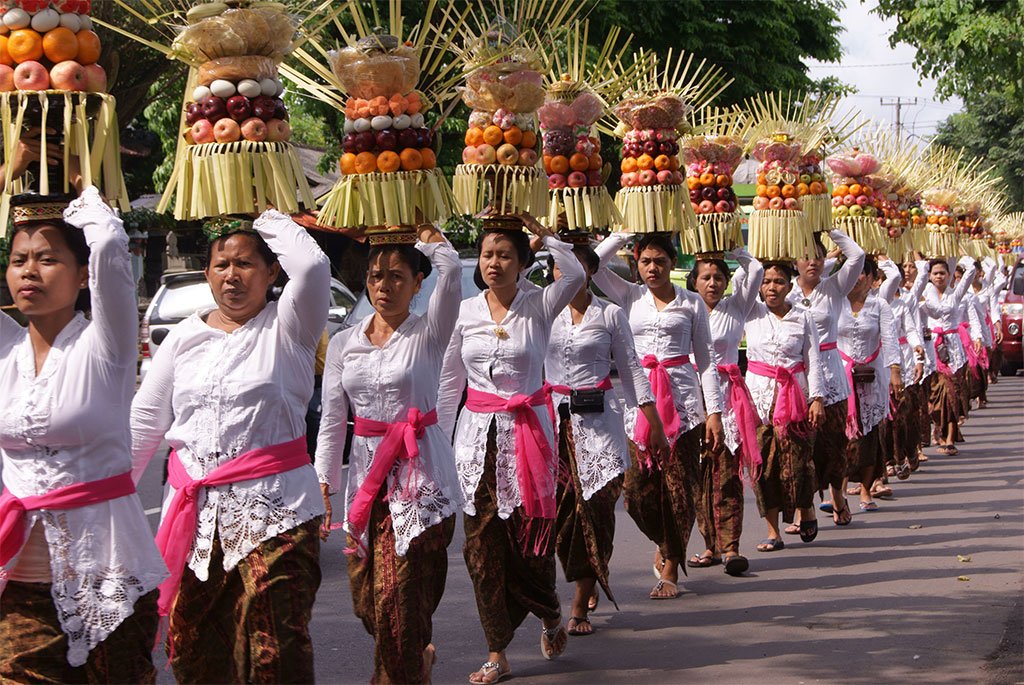The Balinese Way: Understanding Social Etiquette and Respect
When you think of Bali, you might picture stunning beaches, vibrant temples, and lush landscapes. But beneath the island’s breathtaking beauty lies... Read More

Nestled in the heart of Indonesia, Bali is more than just an island paradise of turquoise waters and golden sunsets. It is a vibrant tapestry of tradition, spirituality, and community—a living canvas where daily life and ritual interweave seamlessly. Ceremonies punctuate the Balinese calendar like jeweled beads on a sacred thread, each one steeped in centuries‑old customs and a sense of divine purpose. These events are not merely spectacles; they are the lifeblood of Balinese identity, connecting people across generations and bridging the seen with the unseen.
Prepare to embark on a spiritual journey as we dive deep into eight of Bali’s most iconic ceremonies—uncovering their origins, symbolism, and what makes them so captivating to both locals and visitors.
What It Is
Odalan is the birthday celebration of a Pura (temple), observed according to the Balinese Pawukon calendar, typically once every 210 days. With over 20,000 temples across the island, Odalans are frequent but always unique to each temple’s community.
Significance & Spiritual Purpose
Just as individuals mark anniversaries, the Balinese honor temples—the “homes of the gods”—with elaborate offerings, dances, and music. It’s a day when the veil between the spiritual and physical worlds is at its most transparent, a time for purification, gratitude, and communal renewal.
Ritual Highlights
Why It Resonates
Odalan is a window into Bali’s social heart. It invites everyone—priest, noble, farmer, tourist—into a communal embrace of faith and festivity.
What It Is
Galungan and its concluding festivities, Kuningan, span about 10 days. Galungan marks the descent of ancestral spirits to earth, while Kuningan sends them home.
Symbolic Essence
The essence of good triumphing over evil shines in every detail. The vibrant penjors again dominate the landscape, symbolizing prosperity and divine blessing.
Core Ceremonies
Why It Matters
More than a festive fortnight, Galungan reminds Balinese that spiritual life permeates all aspects of living. It’s a soulful affirmation of values—harmony, compassion, and remembrance.
What It Is
A four-day cleansing ritual ahead of Nyepi (the Day of Silence). Entire communities walk to the sea or lakes to purify sacred temple heirlooms (pradaksina) and pray for spiritual cleansing.
Spiritual Undertone
Water represents purity and cosmic flow. Melasti restores balance—between mind and body, human and divine.
Key Practices
Visual Splendor
White-robed crowds streaming toward the sea, offerings bathing in saltwater—pure devotion made visible.
What It Is
Giant demonic figures carved from bamboo and paper-mâché, paraded through villages in a joyful yet eerie ceremonial procession.
Purpose
Ogoh‑Ogoh represent malevolent spirits. Their creation and procession symbolize confronting inner darkness and societal negativity, culminating in ritualistic destruction.
Energetic Station Events
What It Is
Marked by almost total silence: no lights, no travel, no work—for 24 hours.
Spiritual Intentions
What Happens
Why It’s Unique
Rarely does an entire society collectively pause. Nyepi is not just religious, but ecologically symbolic, inviting both spirituality and environmental respect.
What It Is
A coming-of-age ceremony for adolescents, where upper canine teeth are filed blunt to symbolize maturity and spiritual discipline.
Meaning
Sharp “animalistic” canines metaphorically reflect negative human impulses—anger, greed, jealousy. Filing them smooth signifies the power’s sublimation.
Ceremony Details
Cultural Resonance
It marks a key transition: from youth to adult responsibilities, serving as both psychological and spiritual initiation.
What It Is
The Hindu-Balinese cremation ceremony, a dazzling spectacle involving funeral pyres, symbolic sarcophagi, and release rites.
Cultural Roots
Death is transformational. By cremating, families release the deceased’s soul (atma) from earthly ties, ensuring spiritual progression.
Phases of Ceremony
Sensory Experience
A swirl of gongs, temple chants, colourfully adorned bearers, and crackling pyres—a paradox of grief and celebration.
What It Is
A communal ritual related to irrigation and agriculture, anchored in Bali’s 900-year-old subak system—an egalitarian model of water management.
Spiritual-Agrarian Philosophy
Rice is “white man’s food”, land its body, water its lifeblood. The rituals offer gratitude to Dewi Sri (rice goddess) and ensure fertility and abundance.
What Happens
Significance
More than irrigation—it’s social cohesion. The subak system inspired UNESCO to list it as Intangible Cultural Heritage.
What It Is
Pendet is a welcome dance often performed to greet deities or VIPs, invoking blessings through scattered flower petals and graceful movements.
Rooted in Symbolism
Expressing reverence and sanctity—petals raining down speak of goodwill, purity, and divine favor.
Dance Dynamics
Continuing Legacy
While its sacred purpose remains, modern Balinese also introduce Pendet in cultural shows and international galas—bridging heritage with hospitality.
These eight ceremonies are more than cultural landmarks; they are expressions of Bali’s soul—woven in devotion, artistry, and unity. They remind us that spirituality need not be silent or static; it can be bright, communal, tangible, and even ecologically conscious.
If you visit during a ceremony, remember:
Bali doesn’t just exist—it resonates.
Join The Discussion